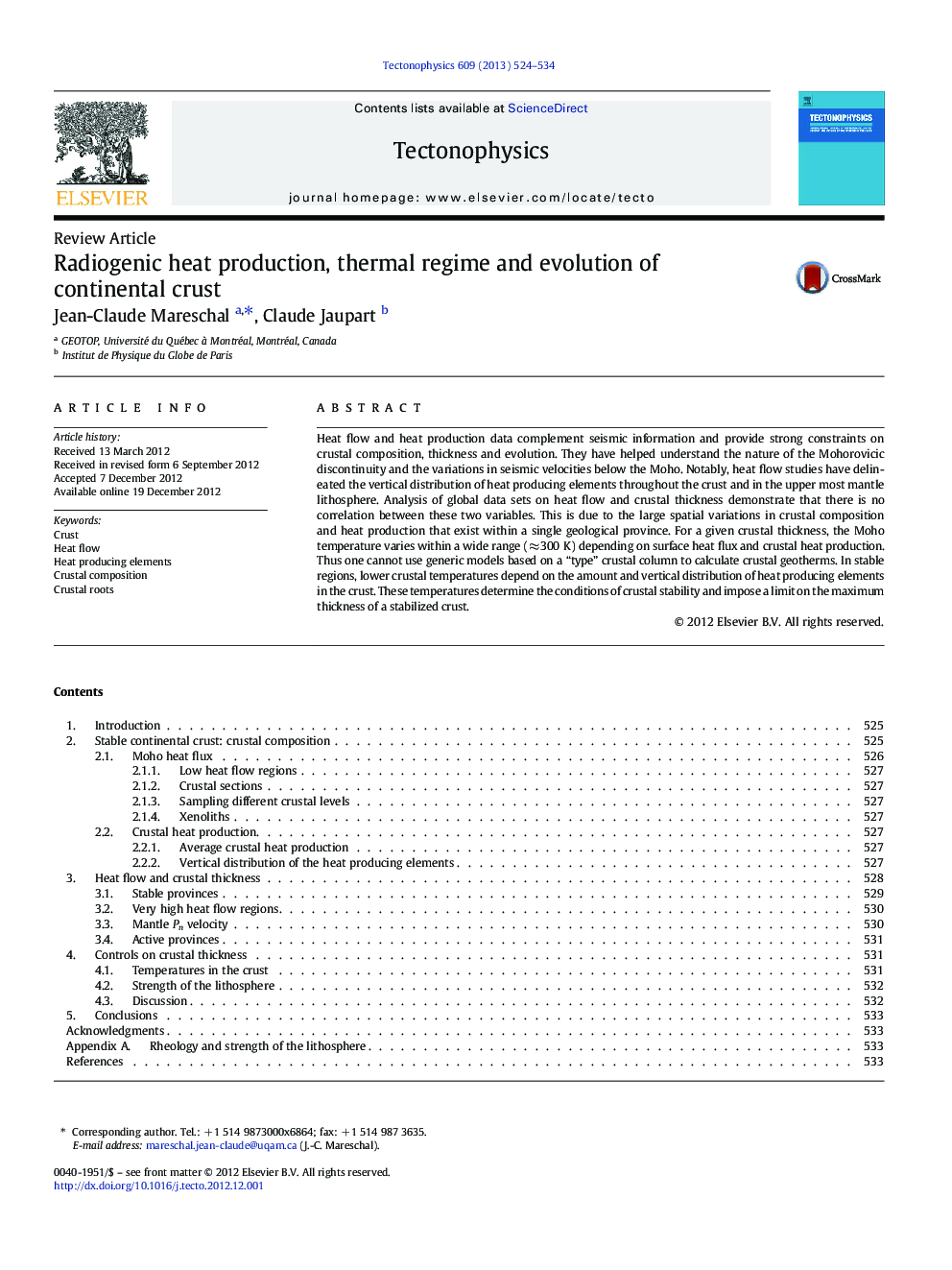| Article ID | Journal | Published Year | Pages | File Type |
|---|---|---|---|---|
| 6434097 | Tectonophysics | 2013 | 11 Pages |
Heat flow and heat production data complement seismic information and provide strong constraints on crustal composition, thickness and evolution. They have helped understand the nature of the Mohorovicic discontinuity and the variations in seismic velocities below the Moho. Notably, heat flow studies have delineated the vertical distribution of heat producing elements throughout the crust and in the upper most mantle lithosphere. Analysis of global data sets on heat flow and crustal thickness demonstrate that there is no correlation between these two variables. This is due to the large spatial variations in crustal composition and heat production that exist within a single geological province. For a given crustal thickness, the Moho temperature varies within a wide range (â 300 K) depending on surface heat flux and crustal heat production. Thus one cannot use generic models based on a “type” crustal column to calculate crustal geotherms. In stable regions, lower crustal temperatures depend on the amount and vertical distribution of heat producing elements in the crust. These temperatures determine the conditions of crustal stability and impose a limit on the maximum thickness of a stabilized crust.
⺠There is no correlation between heat flux and crustal thickness. ⺠Generic crustal models inadequate to predict geotherms. ⺠Heat flux and heat production constrain crustal thickness. ⺠Vertical differentiation of heat producing elements determines maximum crustal temperature. ⺠Differences in potential energy exceed lithospheric strength for crust thicker than 60 km.
